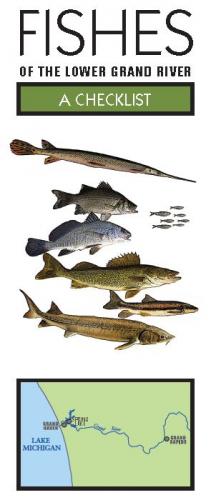Fish lifelists offer new goals for anglers and naturalists
Michigan lakes and rivers are home to an impressive number of fish species that most people never encounter. Keeping a lifelist is one way to explore and enjoy the variety of fish in local waters.
Did you know that 147 species of fish can be found in Michigan waters? The official list of Michigan fish includes representatives from 28 families ranging fr
Despite this diversity, anglers regularly target only around 30 species on a regular basis and non-anglers rarely learn how to observe and identify fish. With a little knowledge, though, and a healthy dose of curiosity, you can open the door to a “deeper” appreciation of your favorite lakes and rivers. Starting a lifelist of fish species is one way to provide incentive to take a closer look at home waters or to explore new environments.
In the bird watching world, lifelists have long served as the tool of choice for charting progress, comparing notes, and measuring success. Birders might keep a single lifelist for all species they have identified in the field, or multiple lists broken down by region, year, or method. A small but growing number of anglers is adapting this approach and finding the fun in keeping lifelists.
Roughfish.com is an online community that offers free membership and tracking of lifelists for members. The site also includes forums and articles that are helpful for learning to target and identify species that are rarely caught using methods appropriate for more popular gamefish. Take the longnose gar, for instance. A gar’s mouth is too bony to penetrate with a hook, so hookless lures that tangle in their teeth are far more effective.
A good resource for non-anglers is the North American Native Fish Association (NANFA), an organization dedicated to education and the conservation of native fish. NANFA members can offer advice on where and how to observe and collect minnows and other small species rarely caught by anglers. Certain types of nets and minnow traps are legal in most Michigan waters, but be careful to check the Michigan Fishing Guide before collecting.
Although it is not nearly as popular as bird watching, fish watching is also a viable option for nature enthusiasts. Fish ladders and weirs are often closed to fishing when large numbers of fish congregate in the area, offering a great opportunity to see large numbers of fish. Snorkeling in clear streams and inland lakes is a good way to beat the heat and take advantage of low river levels in late summer. Don’t forget to look behind you as predatory fish often follow close behind to grab smaller fish that are spooked by your presence.
Regardless of the methods you choose, keeping a lifelist of fish is a fun way to chart progress while exploring the diverse waters and fishes of Michigan. Additional resources from Michigan Sea Grant and Michigan State University Extension include the new Fishes of the Grand River checklist, and Guide to Great Lakes Fishes – a field guide printed on waterproof paper.



 Print
Print Email
Email

